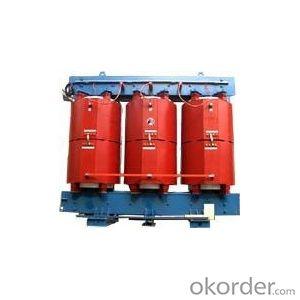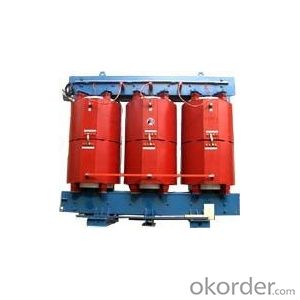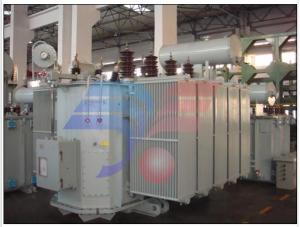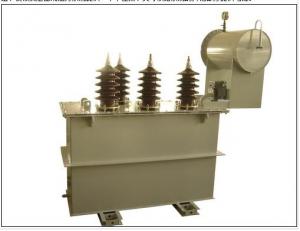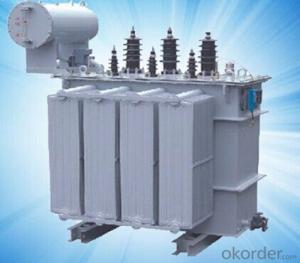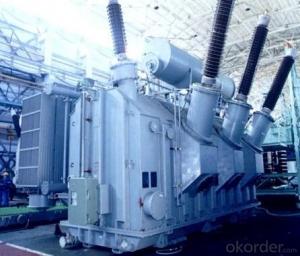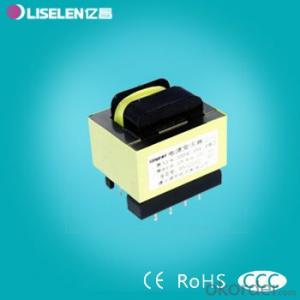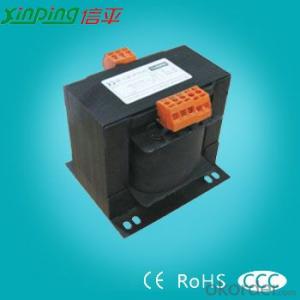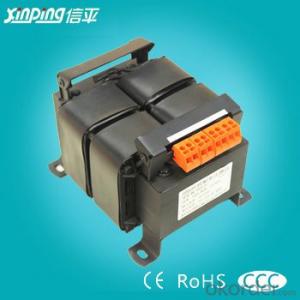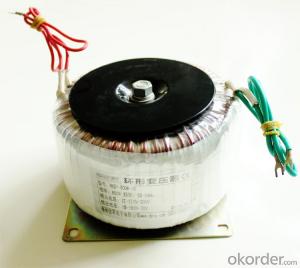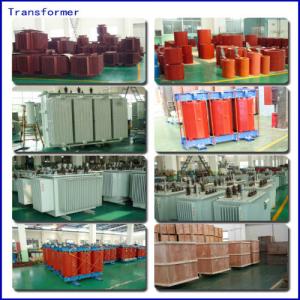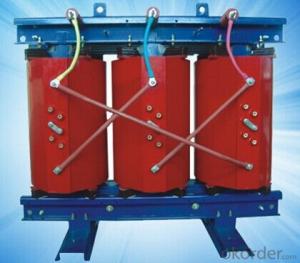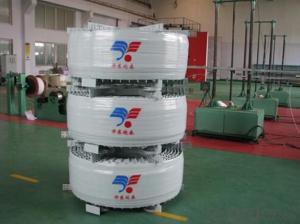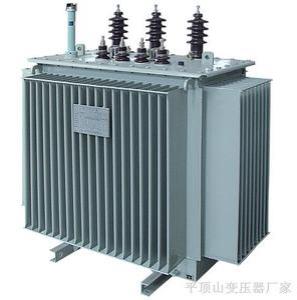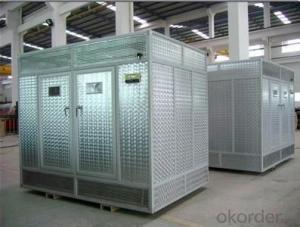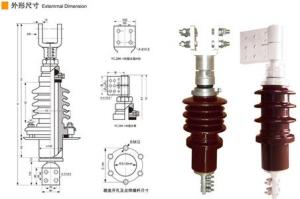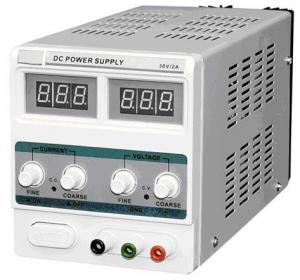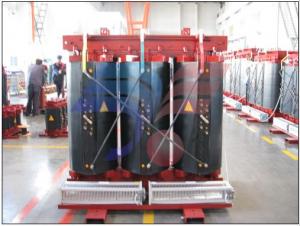Dry-Type Power Transformer
- Loading Port:
- Shanghai
- Payment Terms:
- TT OR LC
- Min Order Qty:
- -
- Supply Capability:
- 1000sets set/month
OKorder Service Pledge
OKorder Financial Service
You Might Also Like
1.Product description
SC(B)10 resin-insulated dry-type transformer is designed basing on the Dupont(the USA) NOMEX paper insulation system. the other key components are made from imported materials (such as german MKM copper foil). with advanced manufacturing equipment and technology, the product enjoys high performance, low energy loss, safety and reliability, its especially suitable for high buildings, airports, substations and commercial centers, and any other anti-fire, anti-explode, anti-moisture places etc.
2.Specification
| Type | Rated current | Voltage combination(KV) | Connection | No-load | Loss(W) | Impedance (%) | ||
|---|---|---|---|---|---|---|---|---|
| (A) | HV | LV | symbol | current(%) | No-load | load | ||
| SC10-30 | 1.73/43.3 | 6±2.5% 6±5% 10±2.5% 10±5% 10.5±2.5% 10.5±5% 11±2.5% 11±5% | 0.4 | Dyn11 Yyn0 | 2.5 | 190 | 700 | 4 |
| SC10-50 | 2.89/72.2 | 2.2 | 270 | 990 | ||||
| SC10-80 | 4.62/115.5 | 2.1 | 370 | 1380 | ||||
| SC10-100 | 5.77/144.3 | 1.9 | 400 | 1570 | ||||
| SC10-125 | 7.22/180.4 | 1.7 | 470 | 1840 | ||||
| SC10-160 | 9.24/230.9 | 1.7 | 540 | 2120 | ||||
| SC10-200 | 11.6/288.7 | 1.5 | 620 | 2520 | ||||
| SC10-250 | 14.43/360.8 | 1.5 | 720 | 2750 | ||||
| SC10-315 | 18.19/454.7 | 1.3 | 880 | 3470 | ||||
| SC10-400 | 23.09/577.4 | 1.3 | 980 | 3990 | ||||
| SC10-500 | 28.9/721.7 | 1.3 | 1160 | 4880 | ||||
| SC10-630 | 36.4/909 | 1.2 | 1340 | 5870 | ||||
| SC10-630 | 36.4/909 | 1.2 | 1300 | 5960 | ||||
| SC10-800 | 46.2/1154.7 | 1.2 | 1520 | 6950 | 6 | |||
| SC10-1000 | 57.7/1443.4 | 1 | 1770 | 8130 | ||||
| SC10-1250 | 72.2/1804.3 | 1 | 2090 | 9690 | ||||
| SC10-1600 | 92.4/2309 | 1 | 2450 | 11730 | ||||
| SC10-2000 | 115.5/2886.7 | 0.9 | 3320 | 14450 | ||||
| SC10-2500 | 144.3/3608.4 | 0.9 | 4000 | 1717 | ||||
- Q: What is the use of the lower part of the transformer made of rail?
- Transformer parts are equipped with a roller. You can easily pull the transformer into or out of the transformer room. After the transformer is positioned, do not weld the wheels and rails. Another support also received.
- Q: 150KVA transformer can withstand much power, how to calculate
- The power unit is watts (W). Power = current * voltage 1A * 1V = 1W Then 150KVA = 150KW that is 150 kilowatts!
- Q: I was wanting to buy my little brother a transformer toy, but not one of these cheap ones you buy today, but one you actual transform by yourself like when I was younger. So whats a good website where I can find some for him and me to play with, and I don't really want to spend to much on them, just enough.
- big bad toy store archonia ( located in europe though so shipping might be more then its worth ) and just to avoid confusion all transformers toys are by hasbro they have always been by hasbro
- Q: I need to run 12 amps through a 5-ohm electromagnet which means 60 volts must fall across it. I am building a power supply bridge rectifier circuit to fit my needs. I have a transformer capable of handling the wattage requirements but I am having trouble figuring out the amount of turns on the transformer to have on both the primary and secondary. The primary will be connected to an American outlet and I just don't understand how to get 60 volts DC out since the AC RMS voltage will be different than the rectified DC voltage.
- If the rectified voltage isn't filtered the RMS voltage will be the same as the AC RMS going into it, minius the diode drop which will be anywhere from 1.4V-2V(assuming a full-wave bridge rectifier is being used which will have 2 diodes in the current path at any given time) depending on the diode and the load current. If the electromagnet needs 60VDC then the AC RMS going into the rectifier should be about 60V. So the turns ratio on the transformer will be roughly 2:1 with 120VAC on the input. I say roughly because there will be some loading effect on the transformer secondary and some drop in the rectifier diodes which you may want to compensate for by adding extra secondary turns. If you filter the rectified voltage, meaning you put a capacitor on it, the output voltage will be closer to the peak voltage(RMSx√2). How close it is to the peak will be determined by the load current and how big the capacitor is. There are multiple formulas you can grab online that compute 60Hz ripple voltage.
- Q: I use a 1000 watt transformer for my tv, dvd player, cd player, game cube and nintendo (only 2 can be plugged in at a time or it is a fire hazard). The transformer is very strong and flips the circuit breaker if anything else in the house is plugged in and I try to plug that in. I'd rather not have to unplug everything to plug it in but I am worried I am wasting electricity if I keep it plugged in. So my question is does transformers use energy if they are plugged in and the appliances plugged into it aren't turned on? Also, do you think I can use a smaller transformer for those items listed above if it does use energy? The boxes that I buy them in don't say, they just say what watt they are.I've tried to look it up but I can't understand any of it so thank you in advance for helping me.
- I can't say that I fully understand your situation but, transformers do use energy even when the load is in an off state. The transformers job is to convert and provide power. It does this if the device is either on or off.
- Q: i have one transformer, but i don't know what wattage does he haveso can someone help me with that
- If the transformer has both the voltage and the current or amps listed on it just multiply the two to get wattage. A 110 volt transformer at 5 amps will be 550 watts. If the transformer doesn't list both of these specs, try looking up the brand and part number to see if you can find them. That would be the only way. A bigger transformer will generally have a higher wattage rating but you won't know exactly what the rating is.
- Q: 630kva dry-type transformer rated current is how much
- If it is a 10kV transformer, Then the rated current = 630 / 10.5 / √3 = 34.64A, which refers to a current, phase current
- Q: If a power surge from a house shot back towards a transformer, would it ground the charge or bypass the transformer and harm the surrounding wires?
- No, the transformer itself wouldn't ground it. I don't know if they have some kind of surge protector, by the transformer would just 'pass it on' (most likely blow a fuse if the trannie survived
- Q: If calculating the efficiency of a transformer with different frequencies,how can the frequency be altered? For the experiment the voltage applied will have to be constant, is this still possible? or what quantities will be kept constant? and which will be measured to calculate the efficiency? using PVI to then use %(Pout/Pin)*100 would mean measuring current and voltage, is this the best way?
- properly no rely what engineering considerable you elect, you may desire to take Calculus a million 2, Matrices, Differential Equations, Chemistry a million 2 with labs, Physics a million 2 (Electromagnetism). you do not easily declare your engineeing considerable till the top of Sophmore 300 and sixty 5 days in college. Junior 300 and sixty 5 days is once you would be formally enrolled in a considerable. once you word for college and choose a considerable, you at the instant are not easily enrolled in that considerable and you will nevertheless choose any considerable you prefer. they merely ask what considerable you have an interest in to verify you're taking the mandatory situations on your first 2 years earlier stepping into your considerable in Junior 300 and sixty 5 days. interior the 1st 2 years of taking chemistry, math, and physics, you may additionally take Intro to engineering(CAD), and a brilliant form of engineering classes and electives like Statics, Dynamics, power of fabric, Thermodynamics, Into to electric powered Engineering(Circuits), C++, or Fluids. those classes will help you make certain what direction to circulate in direction of. based on your description, you desire Mechanical or business Engineering. the two deal in convalescing performance of goods, machines, and approaches. the two have numerous math. the two prefer expertise of Physics and the two require you to be good in difficulty fixing.
- Q: i have a bunch of transformers and they have the dates like i have optimus prime it says takara hasbro 1980-1982 and all the other toys say hasbro or takara! and most are made from 1982 -1985 also i have jet fire but the stamp doesn't say hasbro or takara but it does say bandai 1984!
- this is defined in the action picture, which occurs between Season 2 and Season 3. additionally, word that new characters ensue in particularly some episodes devoid of rationalization, and not in easy terms in Season 3.
Send your message to us
Dry-Type Power Transformer
- Loading Port:
- Shanghai
- Payment Terms:
- TT OR LC
- Min Order Qty:
- -
- Supply Capability:
- 1000sets set/month
OKorder Service Pledge
OKorder Financial Service
Similar products
Hot products
Hot Searches
Related keywords
